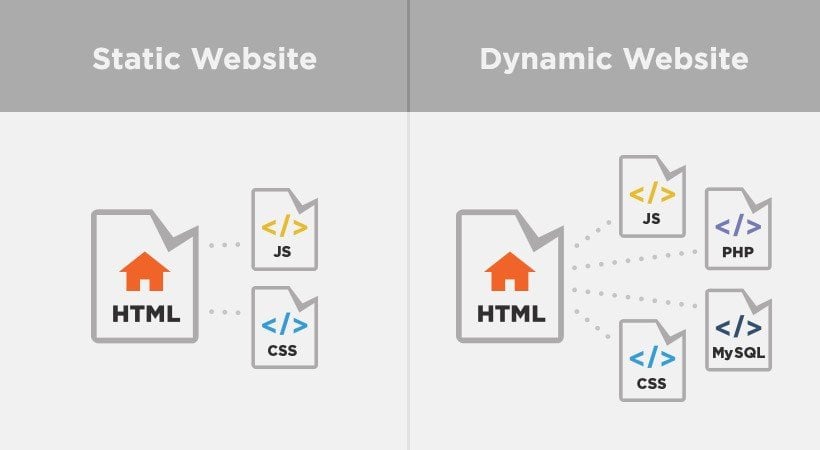


You’re going to rank higher on Google and other search engines using static websites. Better SEO – Search engines like DuckDuckGo, Bing, or Google, have a much easier time indexing HTML.Easy and quick to develop – Right off the bat, developers will inevitably have a much easier time developing static websites.Since they don’t need to load stuff like JavaScript and lots of code, they can load much faster. Far quicker load times – Static sites are made out of simple and easily indexable HTML files.Since a static website is just a bunch of HTML files that can be easily loaded, it’s always going to load faster than a dynamic website which has to execute JS to render.īefore we get to the part where we pick the right SSG, here’s a short overview of the pros and cons of static websites. Well, compared to dynamic websites, static websites are, umm, more… static?Īs opposed to dynamic websites, which are going to respond differently depending on different inputs like the time of the day or the location of the user, static websites are going to respond in the same way. However, don’t be fooled – even though they can be considered an alternative to the classic content management system approach, they’re nothing like them. Static website generators are an interesting replacement for the classic CMS like WordPress or Joomla. SSGs generally go hand in hand with the Jamstack web development approach. When speaking of static site generations one has to mention Jamstack. Static Site Generators Are Not a Replacement for the Classic CMSĭon’t delete your WordPress site just yet! Since search engines pay close attention to your website’s load time, the quicker, the better. Since they’re so easily accessible, search engines like Google can easily index and access them. Whenever somebody tries to access your web page, the server responds by giving those HTML files to them.

You write up a bunch of HTML files, upload them to your web server, and voila. Static Site Generators are really straightforward. It’s mostly about page speed, user experience, and SEO positioning.
#STATIC WEBSITE EXAMPLES GENERATOR#
So, leave the ‘what’s the best static site generator’ hat at the door, and put the comfy ‘what’s the best static site generator for me?’ slippers on. It also ensures that no extra files get included in the build context when the Docker image gets built.Best Static Site Generator – Is There Such a Thing?įor this article, we’ve carefully picked out 6 of the most interesting static site generators, each of which has something unique to offer.īecause honestly, what’s the purpose of comparing ‘the best’ static site generators if, in the end, they’re pretty much all the same? This isn't just for tidiness, or for letting flyctl detect your app by the fly.toml in the working directory (although these are good reasons).

If you cloned the repository, your new app already has its own directory. Let's go through what's included in the example repository and why. Putting the App TogetherĪt this point, if you have a local clone of the hello-static repository, you could go ahead and run fly launch from its root directory and get the static site deployed without further ado. Once that's installed you'll want to log in to Fly. If not, hop over to our installation guide. If you've already installed it, carry on. To configure our application and deploy it on Fly.io, we need flyctl, our CLI app for managing apps on Fly. Alternatively, you can create all the files manually as you work through this guide.


 0 kommentar(er)
0 kommentar(er)
